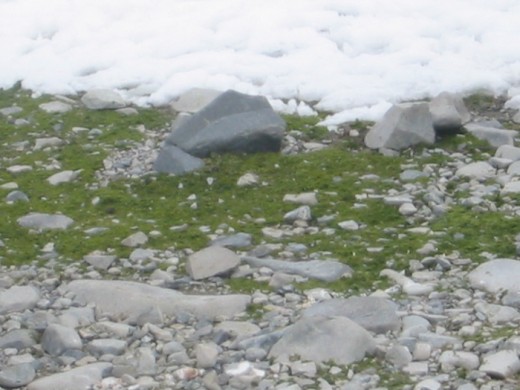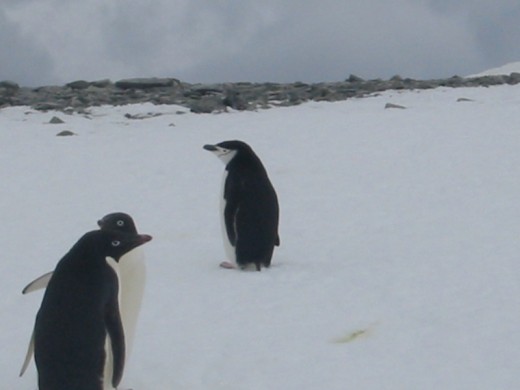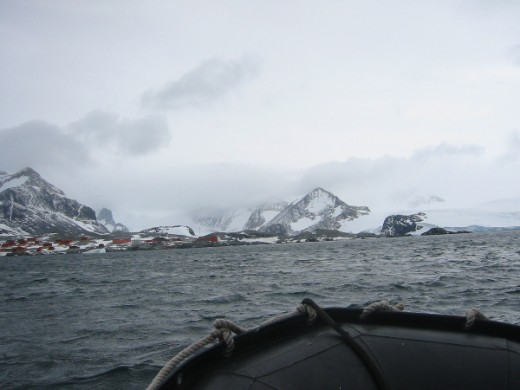Esperanza Argentine Antarctic Base at Hope Bay
Esperanza was established in 1951. In 1977, the Argentine government began sending women and children to Antarctica. One of the women brought in was seven months pregnant. On January 7, 1978, Emilio Marcos de Palma was the first baby born in Antarctica. Today the base is the home to about a dozen children that live with their families at the base year-round. I learned from one of the children (one of the students on my trip was from Chile and translated for us) that most families are stationed at the base for 1 year at a time.
When walking on the gravel roads through the base, I felt like I was in a small town. The base has a school, a chapel, a post office, an infirmary, 13 housing buildings, and a graveyard. Esperanza even has a museum.
The base is in the middle of an Adélie penguin rookery that has around 100,000 pairs. Most of the rookery is protected and off-limits to tourists, but in the small part not only did I see Adélie penguins, but I also saw a few Gentoo penguins and a Chinstrap penguin, which is rare for this area.
During our visit to the base, we were invited into the mess hall, where we were served refreshments. In the mess hall we were able to buy some souvenirs. Some of them were expensive, but you have to pay a price to bring home a souvenir from the southern continent. The mess hall also served as the base’s entertainment room. There was a foosball table, a ping-pong table, and a television. Who knew that they had Direct TV down in Antarctica? I watched as some of my group engaged in foosball and ping-pong games with the children on the base.





